Katagami (型紙)
Literally "molding paper," this is a decorative technique that involves rubbing cobalt-colored pigment through a stencil (originally made of paper) to create a pattern of punctuated lines or dots under the glaze (Bibb 2001:5–6). Katagami vessels are often heavily decorated on both interior and exterior surfaces and frequently include yoraku (瓔珞) designs along the interior rim. Developed in the Edo era, katagami was most popular on Meiji-era mass-produced porcelains (Bibb 2001:5-6) prior to the development of transferprint technology. Katagami decoration had largely disappeared from the Japanese market by about 1920 (Ross 2009:156).
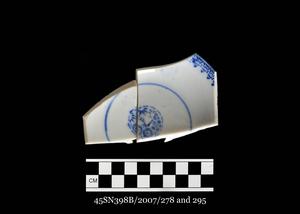
Interior of Sometsuke Katagami Sho Chiku Bai Gohan Jawan (rice/soup bowl with cobalt stenciled three friends design)
Item Record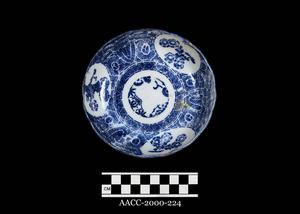
Top of Sometsuke Katagami Sho Chiku Bai Namasu-Zara (pickle dish with cobalt stenciled three friends design)
Item Record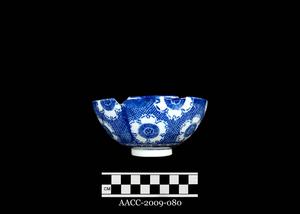
Side of Sometsuke Katagami Sakura Gohan Jawan (rice/soup bowl with cobalt stenciled cherry blossom design)
Item Record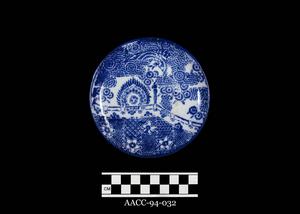
Top of Sometsuke Katagami Mitsu-Domoe Kozara (small dish with stenciled yin-yang design)
Item Record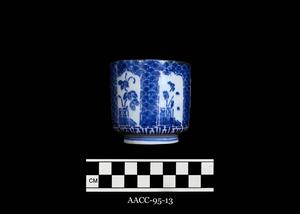
Side of Sometsuke Katagami Seigaiha Tsutsu Yunomi (cylindrical teacup with stenciled blue sea waves)
Item Record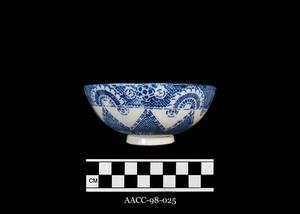
Side of Sometsuke Katagami Sho Chiku Bai Kobachi (small bowl with cobalt stenciled three friends design)
Item Record